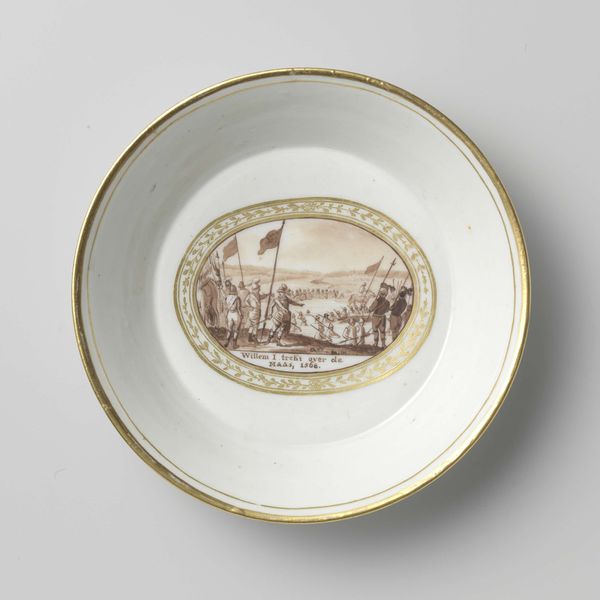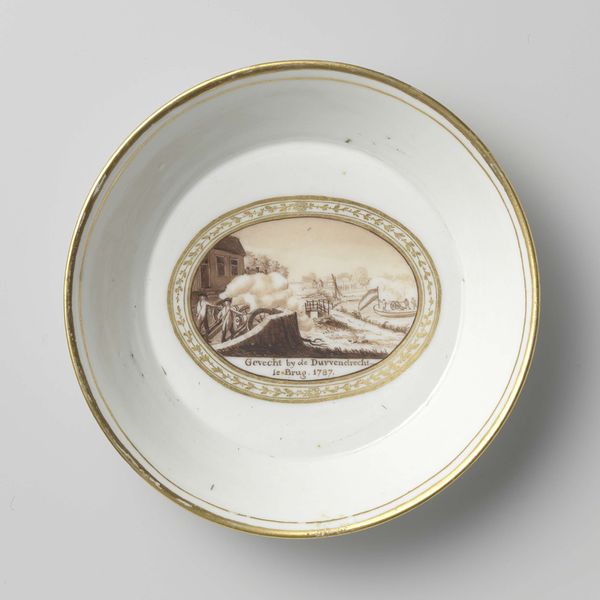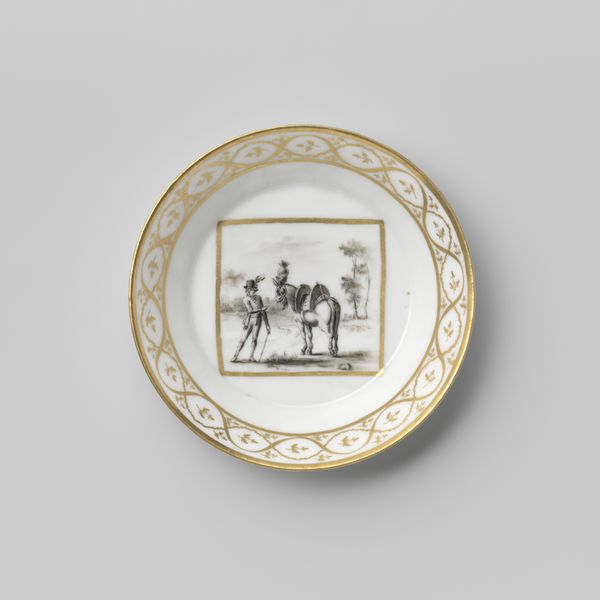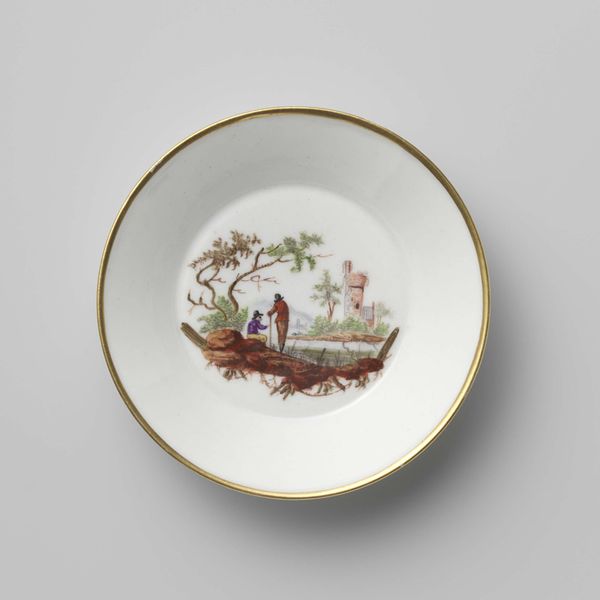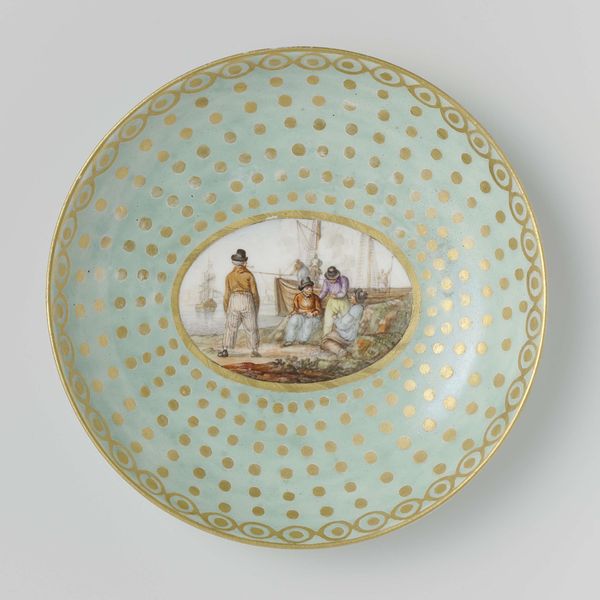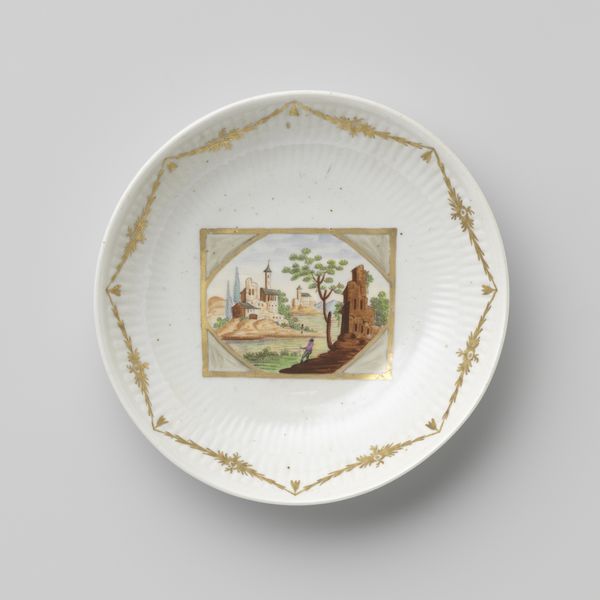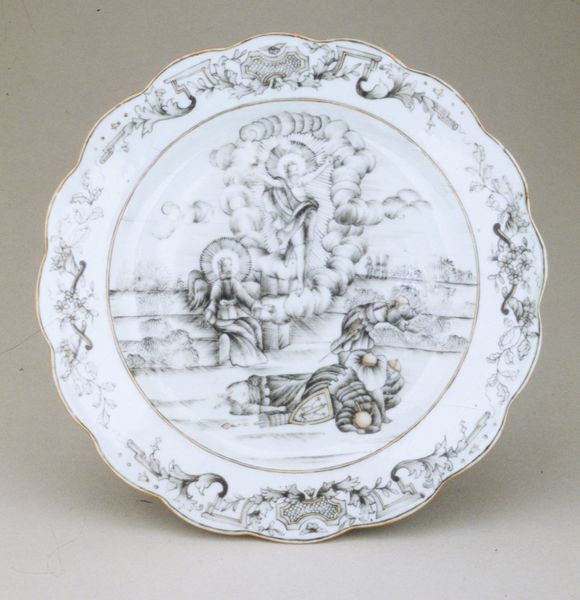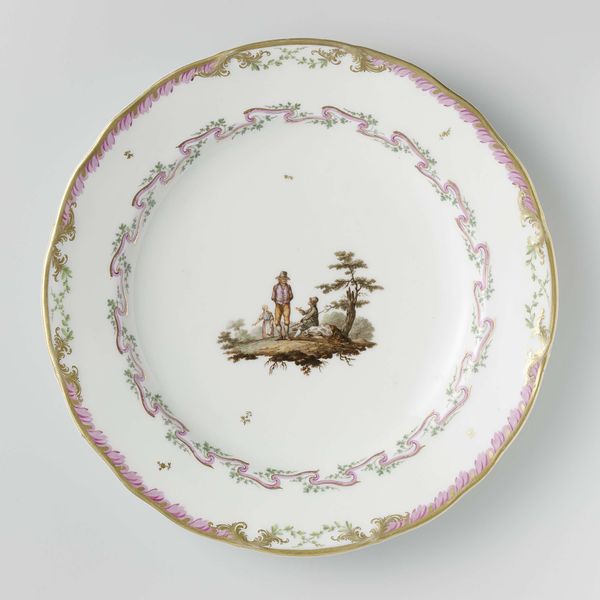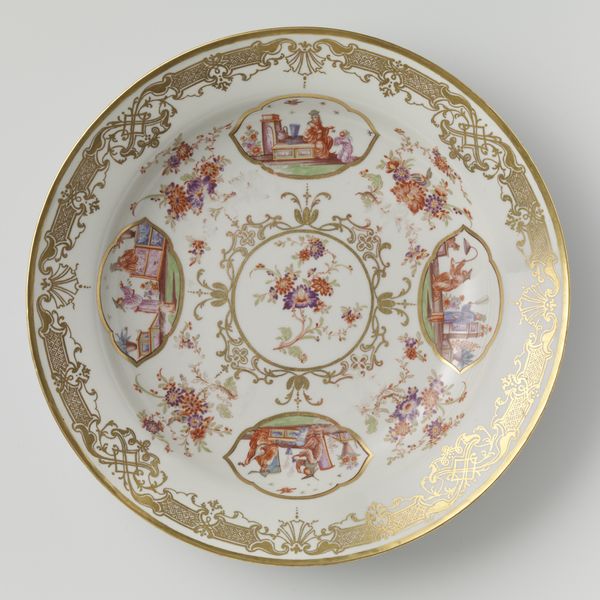
ceramic
#
portrait
#
pottery
#
ceramic
#
history-painting
Dimensions: height 3 cm, diameter 12.7 cm, diameter 8.8 cm
Copyright: Rijks Museum: Open Domain
Curator: This lovely ceramic saucer, housed right here at the Rijksmuseum, offers a glimpse into Dutch history through an unusual lens. Made anonymously after 1794, it's titled "Saucer with an image of the Revolt of the Batavi". Editor: It's immediately striking how such a grand, potentially violent historical subject is contained within the delicate form of a decorative plate. The sepia tones give it a slightly faded, antique feel. Curator: Indeed. The very choice of portraying a historical revolt on everyday tableware raises some interesting questions about accessibility and propaganda. Was this meant to inspire patriotism in everyday citizens? Were these mass produced? The lack of a specific maker certainly points to a wider distribution and potential consumption beyond the elite. Editor: Formally speaking, the artist’s use of a limited palette and the oval vignette creates a sense of distance. The composition draws your eye towards the figure on horseback. How is that central figure framed in relation to the rioters, or perhaps soldiers surrounding him? Curator: I think that understanding the socio-political backdrop becomes vital here. The revolt, which occurred centuries before this piece, was re-imagined in the late 18th century as a symbol of Dutch resistance to foreign rule. Depicting it on something commonplace makes history, and thus patriotism, almost digestible. What role does pottery making, specifically the techniques used here, play in the creation of national identity? Editor: Right. And looking closely at how the image is framed within that decorative gold rim... the detail is incredible, despite its scale. The artist very deliberately uses this medium and that framing to make some key aesthetic and conceptual decisions. Curator: Absolutely. I also think we need to look beyond aesthetics; who fired this? What were their working conditions? What system of labour enabled its creation? That context adds layers of meaning that just pure aesthetics can obscure. Editor: Perhaps. But focusing on visual relationships also tells a rich and complex story, without dismissing labor practices that also require an investigation. I still think, compositionally, there is an intense central drama that it has to be addressed within those artistic terms. Curator: I concede to the appeal! Seeing history reflected on such a humble object really brings a tactile dimension to our understanding of national narrative. Editor: It is, regardless, an intriguing encapsulation of history, symbolism, and everyday artistry.
Comments
No comments
Be the first to comment and join the conversation on the ultimate creative platform.
